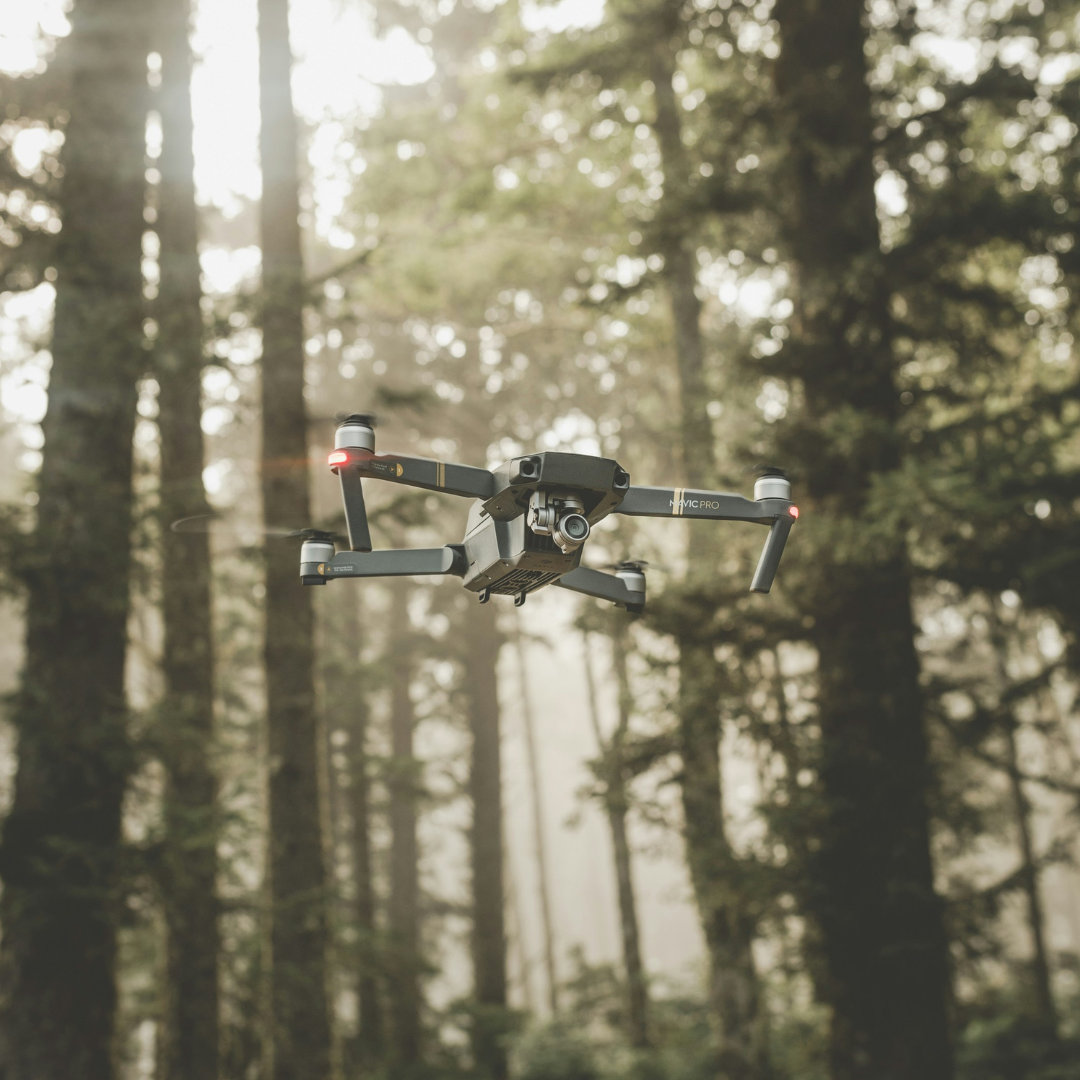
In recent years, drone technology has soared (see what we did there) beyond initial applications, finding their way to new and impactful roles in wildlife conservation. Specifically, drones are revolutionizing how we manage the balance between wildlife and human activities (like ranching). Among the promising uses of this technology, at least in our opinion, is the non-lethal management of wolf-livestock conflicts.
Before we go any further, let’s take a look at what drones are and how they operate. Drones, also known as Unmanned Aerial Vehicles (UAVs), are operated remotely, providing opportunities to access geographic areas that are more challenging and/or risky for human crews.
Equipped with cameras, infrared sensors, and GPS, drones can collect real-time data from a bird’s-eye view, monitoring vast expanses of terrain at once. Talk about efficiency…
Drones offer a variety of applications in wildlife conservation management, revolutionizing the way we monitor and protect various species and their habitats. For example, drones can be deployed to:
Traditional wildlife management methods often involve lethal forms of control. This disrupts ecological balance and ultimately leads to negative outcomes for all species. With the use of drones, we can:
In 2022, USDA & Wildlife Services (National Wildlife Research Center) conducted a study using drones to haze wolves as a means of wolf-livestock conflict mitigation. This study revealed that drones were highly effective at deterring conflict, with depredation levels nearly 23 times LOWER than without the use of drones.
As drone technology continues to evolve, its applications in conservation work will likely expand and offer even more opportunities to manage wildlife with less intrusion. We’re not going to lie – it is going to be an ongoing challenge to balance technological integration with ethical considerations to ensure conservation efforts remain inclusive of the needs of ALL stakeholders (wildlife included).